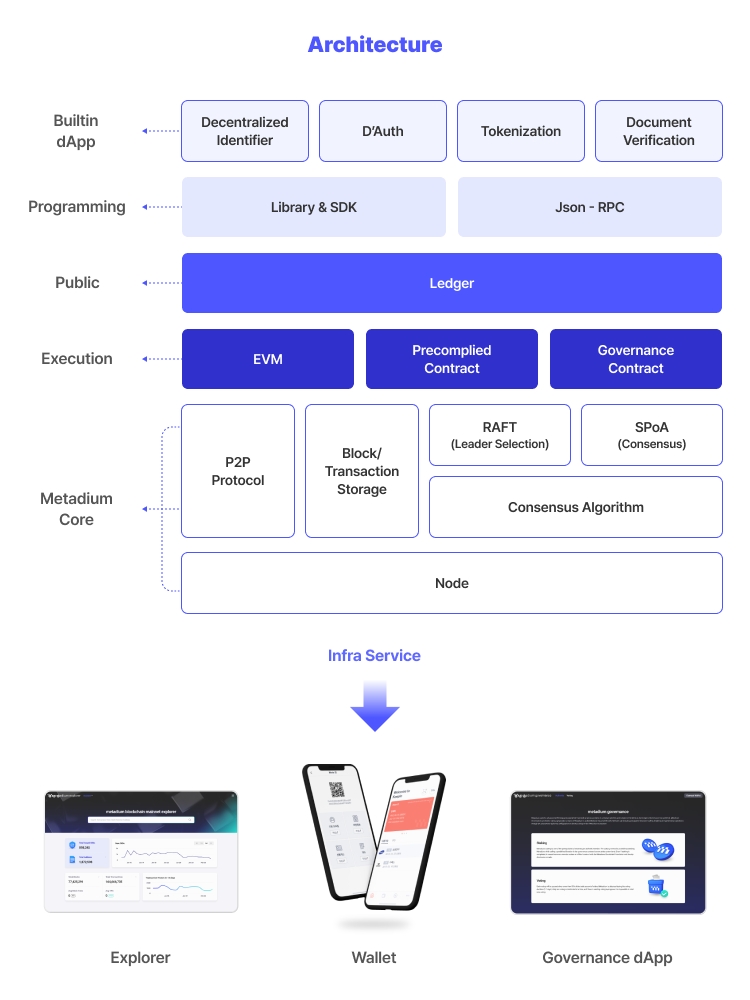Architecture
The Metadium blockchain operates through peer-to-peer (P2P) communication among distributed nodes, utilizing a leader election based on the Raft Consensus Algorithm and a consensus algorithm based on Staked-based Proof of Authority (SPoA). Since it runs on the Ethereum Virtual Machine (EVM), developers familiar with Ethereum can easily learn and use it. The Metadium blockchain supports developers in reading and writing Metadium's information from the public ledger through various libraries, SDKs, and Json-RPC. Additionally, it provides dApps for Tokenization, Decentralized Identifier, Document Verification, and D'Auth, allowing developers to develop these functionalities. Moreover, it offers an Explorer for easy blockchain information verification, a Wallet for convenient asset transfer, and Governance dApps for making policy decisions on the blockchain.

The assurance of data integrity is ensured through the blockchain structure, which allows for double data integrity protection through the hash chain. The cryptographic properties of hash functions, including Preimage Resistance, Second Preimage Resistance, and Collision Resistance, make it infeasible to tamper with data arbitrarily. The characteristics of the Metaedium blockchain in this regard are as follows:
Distributed: distributed processing
Consensus: consensus structure
Immutability: data immutability
Finality: Completeness of data
We apply a flexible platform based on the Metadium blockchain, considering basic factors such as scalability and stability.
Scalability: Blockchain nodes for additional services can be added without affecting the overall system, and various services can be expanded using this.
Stability: The service is provided in the form of data replicated and distributed in real-time, ensuring the entire system’s health.
Flexibility: Intelligent and easily scalable services can be implemented through data on the blockchain and code implemented via smart contracts.
Last updated